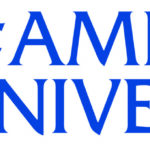By Father Bud Grant
We of the “boomer” generation certainly remember an iconic commercial featured on an old technology delivery system we quaintly call “TV.” Part of the Keep America Beautiful campaign of the 1970s, it featured Oscar “Iron Eyes” Cody (real name, Espera Oscar de Corti) in a Hollywood version of traditional Native American buckskins. He walked, canoed and mused silently through scenes of nature that grew increasingly more polluted, ugly and despoiled. Finally, he turns as the camera zooms in on a single tear tracking down his cheek.
 There is no denying the power of the image, now seen billions of times and credited for a dramatic decline in littering. I grew up very conscious of the “sin” of littering and still gasp at the sight of people casually dropping trash out car windows or onto sidewalks.
There is no denying the power of the image, now seen billions of times and credited for a dramatic decline in littering. I grew up very conscious of the “sin” of littering and still gasp at the sight of people casually dropping trash out car windows or onto sidewalks.
Similarly famous was a powerful (if annoyingly sexist) speech attributed to Chief Seattle (Si’ahl). “Our God is also your God. The earth is precious to Him and to harm the earth is to heap contempt on its Creator … Preserve the land for all children, and love it, as God loves us … This earth is precious to us. It is also precious to you … there is only one God … we are all brothers after all.”
Such well-intentioned co-options of Native cultures were anachronistic, exploitative, stereotyped and reeked of cultural appropriation. The stoic “Indian” was moved to tears, or at least a tear; the buckskin and massive headdress would not have been worn by anyone outside of Hollywood or maybe at a Sun Dance. The casual insinuation is that “real” Native custodians of nature must look and act as though it were 1851.
Indeed Cody is said to have worn his “costume,” including a braided wig, even in private. And, though he denied it throughout his life, Iron Eyes was an Italian American. Also, Chief Seattle’s speech is almost certainly a forgery. Such things reinforce the tenaciously mythic “Indian” environmentalist, created by Whites. They inculcate an ethos of steely self-restraint, “using every bit of the bison” frugality, high pain tolerance and other lessons I was supposed to have learned through my Order of the Arrow induction.
Those early Native/environmentalist campaigns look naive today as Australian bushfires burn 18 million acres and leave a half-billion animals dead while Canberra dithers. Brasil’s Bolsonaro wants even more mines in Amazonia’s Indigenous Reserves, killing both forest and culture. Meanwhile President Trump rigorously advocates for the Keystone Pipeline through “Indian country.”
Not incidentally, those living on traditional lands suffer the worst impact of environmental crises. Indigenous groups are responding by tapping into their traditions and re-appropriating the “green native” image. One headline illustrates this: “Australia’s indigenous people have a solution for the country’s bushfires. And it’s been around for 50,000 years” (CNN 1.12.20). Aboriginals have always managed their environment with low intensity fires.
In response to the Keystone Pipeline, which ruptured 35 times in one year, The Indigenous Environmental Network has partnered with Native and non-Native resisters. One stated goal is to “re-affirm our traditional knowledge and respect of natural laws.” Meanwhile, Kimberly Teehee is poised to represent the Cherokee Nation in Congress, as guaranteed by treaty (there are 4 indigenous members of Congress representing states).
Indigenous peoples around the planet, stirred by their own suffering and empowered by their heritages, deserve support as a matter both of justice and sound environmental protection. But we should tread lightly lest we slip into racist tropes. If the only good “Indian” has been long dead, then their cultures (plural, by the way) are sealed in the syrupy amber of romanticized history, itself a kind of exploitation. The Catholic bishops of Amazonia insist that Indigenous Rights and Care for Creation isn’t just a fashionable cause, “it has become a question of life and death for humanity and the planet.”
(Father Bud Grant is a professor of theology at St. Ambrose University in Davenport.)











